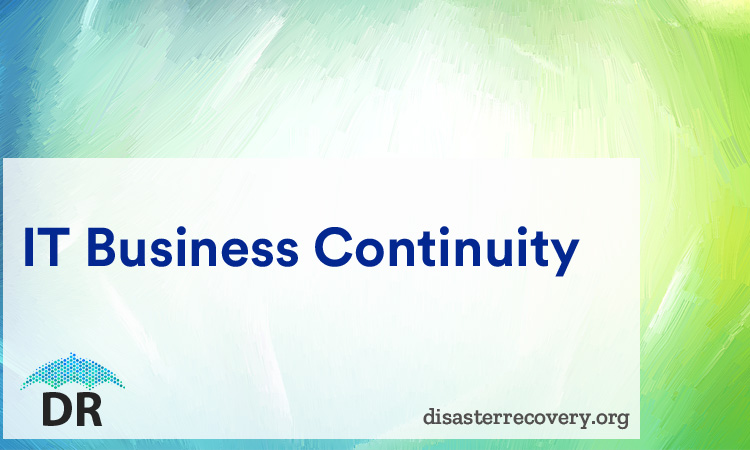Businesses have come to recognize that some services of the organization have to be delivered continuously without interruption. Therefore, instead of focusing only on resuming the business in the shortest possible time, the endeavor is to create an IT Business Continuity Plan to ensure that critical operations continue to be functional even during a disaster. The ideal plan would be one in which the client will not be aware of the occurrence of the disaster since client services will continue as before.
IT Business Continuity

What is IT Business Continuity planning?
For an IT Business Continuity Plan to work, it has to be proactively done and not done in a fits and starts. This will ensure that critical services and products are delivered to the client during a disaster. This will ensure that the business retains client goodwill, meets legal obligations and avoids any death or injury. A well designed IT Business Continuity Plan should include:
- Methods to ensure uninterrupted delivery of critical IT services.
- Identify the resources needed to maintain business continuity from an IT perspective. This should include resources such as critical personnel, equipment, financials, standby equipment, legal help, alternate infrastructure, alternate accommodation etc.
A good Business Continuity Plan not only will save a business from possible financial hardships, its image and goodwill among clients and stakeholders will be enhanced, since it will be perceived as a business which is proactive in protecting not only its interest but also those of its clients and other stakeholders too.
The importance and necessity of a sound IT Business Continuity Plan
- It mitigates the risks associated with Natural disasters of all types.
- Accidents such as fire, explosions etc. which could damage IT infrastructure and cause death and/or injury
- Sabotage, both internal and external
- Power outages
- Communications failure
- Disruptions in transportation due to various factors, preventing employees from attending work
- Security issues that can bring down the network
- Environmental disasters
- Cyber attacks on the business by hackers and/or criminals
By having a effective Business Continuity Plan in place, a business will ensure that it has the resources and/or the information it requires, to combat the emergency successfully.
Areas covered in a Business Continuity Plan
There are five sections to a typical IT Business Continuity Plan. They are: BCP Governance, Business Impact Analysis, Steps for IT Business Continuity, Readiness to implement IT Business Continuity Plan procedures, and testing and training in IT Business Continuity Plan.
BCP Governance –this details the structure of the committee in charge of the IT Business Continuity Plan. Usually, senior managers and heads of department will be in the committee. Since senior people are in charge, they have the necessary authority to see that the plans are formulated correctly and proper training is given to employees.
Business Impact Analysis – this analysis will identify the organization’s critical services and/or products from an IT business continuity perspective. Depending on its criticality, the service will be ranked. The higher the rank, more attention is paid to it. If possible critical services will have to be continued even in the face of a disaster.
Steps for IT business continuity – this will identify services which have to be delivered without interruption. The Business Continuity Plan will outline the steps needed to achieve this goal.
Readiness to implement the IT Business Continuity Plan – when critical services have been identified, steps as per Business Continuity Plan should be taken to ensure that these critical services keep functioning in the face of a disaster, or at the very least, are restarted in the least possible time.
Testing and training – every Business Continuity Plan will look impressive on paper. It is only by testing the plans will the shortcomings be detected and fine tuning done. Staff should also be involved in the development of the plan. They should be given sufficient training, so that in the event of a disaster, they are able to seamlessly switch over to their new roles as per the Business Continuity Plan.
Hopefully, a Business Continuity Plan may never be used. It is a matchless reserve tool in the hand of IT Managers, to keep critical aspects of the business functioning without interruptions. A business which had diligently set up a IT Business Continuity Plan has taken out impeccable insurance for survival.

